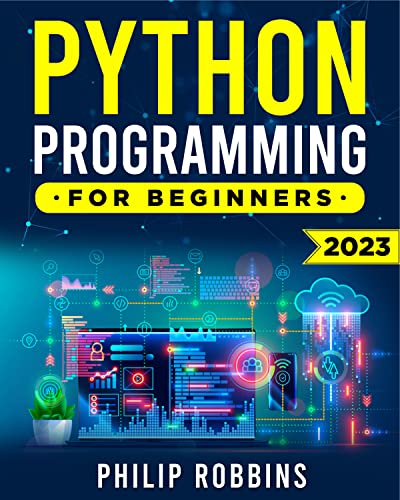Mastering Python: An Essential Guide for Beginners
Python is one of the most popular and versatile programming languages in the world. With its easy-to-read syntax and robust libraries, Python is perfect for beginners and experienced developers alike. In this guide, we will cover the essential Python concepts and tools that you need to know to become a skilled Python programmer. By the end, you’ll feel confident working with both basic and advanced Python features. Let’s get started!
Fundamentals and Syntax
Python’s fundamentals serve as the building blocks for any program. You’ll need to understand data types like integers, floats, strings, lists, dictionaries, and tuples, which are Python’s basic way of storing and organizing data. Python is dynamically typed, so variables don’t need explicit declarations. Other core syntax concepts include control flow with conditional statements (if/else) and loops (for, while). Functions allow you to encapsulate reusable blocks of code and promote code organization and readability. Handling errors gracefully through exception handling ensures your programs can deal with unexpected issues. Finally, Python makes it easy to read and write files with built-in file input/output capabilities.

Object-Oriented Programming Concepts
Object-oriented programming (OOP) is a crucial paradigm in modern software development. In Python, OOP is supported through classes and objects. Classes act as templates that define the properties and behaviors of objects. Inheritance allows defining hierarchies of classes, enabling code reuse through generalization. Polymorphism is the ability of different classes to implement the same methods differently. Python also offers built-in data structures like lists, dictionaries, sets and tuples that serve as powerful tools for structuring and manipulating data. Understanding these concepts early on will help you write scalable, reusable and maintainable programs.
Desktop Applications with GUIs
Developing graphical user interfaces (GUIs) allows creating more user-friendly applications. Tkinter is Python’s standard library for building desktop GUIs with widgets like buttons, labels and boxes. Alternatively, PyQt and PySide are robust options that provide richer features through Qt, a cross-platform GUI framework. For touch-based apps, Kivy is well-suited with its multi-touch capabilities.
Data Science and Analytics
Python shines in the domain of data analytics due to its vibrant ecosystem of packages. NumPy provides multidimensional arrays and linear algebra functionality. Pandas simplifies data exploration, cleaning and manipulation on heterogeneous data with DataFrame objects. Matplotlib brings extensive 2D plotting capabilities, while Seaborn offers a high-level interface for attractive statistical graphics. Jupyter Notebooks offer an interactive development environment where you can combine code, equations, visualizations and explanatory text in a single document - perfect for shareable data analysis projects. With Scikit-learn, you can apply machine learning techniques like classification, regression, clustering and model selection to your datasets.
Web Development with Python
Major frameworks like Django and Flask empower you to build robust, scalable web applications and APIs. Django exemplifies the “batteries included” philosophy with predefined components covering common tasks. Flask takes a simpler microframework approach focused only on core functions, thus providing more flexibility. For high-performance APIs, FastAPI has gained popularity with its intuitive syntax and async capabilities. Python also integrates well with front-end technologies through packages like Flask-RESTful for REST APIs or Tornado for asynchronous servers. Microframeworks like Bottle are ideal for simple sites or prototypes.
Machine Learning Fundamentals
Machine learning allows systems to learn from data rather than being explicitly programmed. With Scikit-learn, you can apply a wide range of algorithms for supervised learning like classification and regression using techniques such as Logistic Regression, SVM, Naive Bayes, Decision Trees and more. Clustering methods such as K-Means help learn the hidden patterns in unlabeled data. Other core concepts include evaluating model performance via metrics like accuracy, precision and recall. Feature engineering is crucial for data preparation, while proper model validation prevents overfitting. For deep learning, TensorFlow and PyTorch offer flexibility to design complex neural network models across computer vision, NLP and general domains.
Natural Language Processing
Natural language processing (NLP) applies machine learning to understand human language. Popular Python libraries like NLTK, spaCy and TextBlob aid with common NLP tasks such as text classification, named entity recognition, topic modeling, spell checking etc. Advanced methods involve convolutional and recurrent neural networks to capture contextual information. With Python, you can tap into large pretrained language models via APIs or integrate powerful NLP algorithms into larger applications and workflows. This opens up possibilities in domains like sentiment analysis, text summarization, machine translation and more.
Computer Vision
Computer vision uses machine learning on images, videos and more visual data. Libraries including OpenCV, scikit-image and TensorFlow provide functionality to load, preprocess and visualize images. You can perform tasks such as image classification, object detection using deep learning models. OpenPose allows human pose estimation. For advanced image generation, style transfer and semantic segmentation, libraries like PyTorch offer flexible frameworks.
In summary, Python equips you with a wide variety of tools and frameworks to handle diverse data types and tackle complex problems across domains. Mastering these core concepts and libraries will provide a strong foundation to develop both simple scripts and sophisticated enterprise-level applications.
